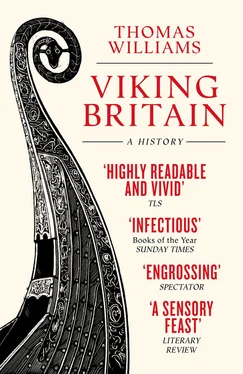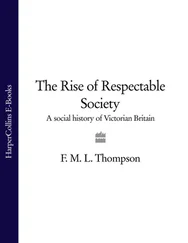However, despite the cultural refinement and territorial muscle, Northumbria had been growing weaker throughout the eighth century, undermined by the incessant feuding of its aristocracy and the instability of its royal house. In 790, for example, around the time that the Northmen had arrived in Portland, King Osred II was deposed after only a year on the throne, forcibly tonsured and exiled from his kingdom. His replacement, Æthelred I, seems to have had powerful friends. It is likely that the coup was carried out with the support of Northumbria’s large and belligerent southern neighbour: the kingdom of Mercia.
Covering most of the English midlands from approximately the modern Welsh border in the west to the borders of East Anglia in the east, and from the Thames valley in the south to the Humber and the Wirral in the north, Mercia dominated southern Britain and reached the apogee of its political dominance under King Offa (r. 757–96). In the last decade of the eighth century, Offa was at the height of his powers. From his power-base in the Staffordshire heartlands around Tamworth, Lichfield and Repton, the king exercised not only direct rule over Mercia, but political and military control over the neighbouring kingdoms of East Anglia, Essex, Kent, Sussex and Wessex. The greatest surviving monument of his reign is the massive defensive earthwork marking the western boundary of Mercia: Offa’s Dyke. The scale of this engineering project is testament to the extent of the king’s power and ambition, not to mention his ability to coerce his subjects into undertaking state-wide projects.11 Offan statecraft was of the Corleone school of governance. When, for example, King Æthelberht of East Anglia attempted to assert a measure of independence (briefly minting his own coins), ‘Offa ordered King Æthelberht’s head to be struck off.’ This sort of gangland authority was closely tied to the personal charisma of the king and, as it turned out, the Mercian supremacy unravelled shortly after Offa’s death in 796.12
The decapitation of King Æthelberht wasn’t enough to bring the kingdom of East Anglia to an end. Comprising at its core the ancient counties of Norfolk and Suffolk (the ‘north folk’ and the ‘south folk’ in Old English), the kingdom had, at the beginning of the seventh century, been an important power-broker. East Anglia had once boasted links to Scandinavia, the rest of continental Europe and beyond, and nothing better exemplifies the kingdom’s cosmopolitan splendour than the great ship burial at Sutton Hoo near Woodbridge in Suffolk. The famous mustachioed helmet found at Sutton Hoo is the ubiquitous icon of the Anglo-Saxon age, an object which in its style, iconography and manufacture has its closest parallels among the grave goods buried with the military elite of southern Sweden. But the burial also contained – among other objects – silverware from the Byzantine Empire (the surviving eastern part of the Roman Empire, centred on Constantinople – modern Istanbul), coins from Merovingian Gaul (which comprised parts of France, Germany and the Low Countries) and weapons and jewellery embellished with garnets imported from India. Although East Anglia would never again achieve the influence it commanded in this glittering seventh-century heyday, it nevertheless maintained its independence long into the ninth century.13
The smaller kingdoms which had lain under Mercian domination during Offa’s reign were, however, destined ultimately to becoming defunct as independent concerns. The royal dynasty of the East Saxons (with its core in Essex) and those of the South Saxons (Sussex) and Kent either disappeared or had been demoted to junior aristocratic rank by the early ninth century. The killer blow in each case was delivered not by Mercia but by another resurgent player in the English-speaking community: Wessex – the kingdom of the West Saxons.
Wessex had experienced a torrid eighth century. With its heartlands in Hampshire and Dorset, Wessex was an assertive force in southern Britain, extending north across Somerset, Wiltshire and Berkshire, and eating steadily westwards into Devon. During its heyday in the reign of King Ine (r. 688–726), West Saxon authority had also extended across Surrey and Sussex in the east. But more than sixty years of attritional warfare with the Mercians to the north had eroded its territories south of the Thames, created a militarized zone across the chalk uplands of Wiltshire and Berkshire and seen control of Sussex lost to Offa’s Mercia. In 786, the pugnacious West Saxon ruler Cynewulf was killed in a power-struggle and the man who emerged as king, Beorhtric, was, it seems, Offa’s man. The impression of Wessex in these years is of a beaten-down kingdom, exhausted by war and resigned to its subordinate status in Offa’s new order. The man who would pick up the banner of West Saxon kingship from Beorhtric, however, was of a markedly different stamp. King Ecgberht (r. 802–39) would take the West Saxon kingdom to the peak of its power and prestige, overwhelming its smaller neighbours, restoring the pride and reputation of its royal house, and ultimately providing the self-confidence that future kings would need in the dark days that lay ahead. But all this was in the future. When the Northmen arrived on Portland, Wessex yet remained a weakened client state of the Mercian supremacy.
Although English kingdoms had been, and continued to be, dominant in lowland Britain, they were never the whole story, and in parts of Britain – notably the highlands and islands of what is now Scotland, Cumbria and the valley of the Clyde, the lands west of Offa’s Dyke and the Cornish peninsula – a number of kingdoms of mixed provenance maintained distinct identities, languages, religious practices and cultural norms. Cornwall, beyond the south-western marches of Wessex, had been only lightly touched by direct Roman rule. At the western end of the kingdom of Dumnonia (Devon and Cornwall), the region had developed a distinctive culture that blended British and Irish influences and maintained maritime links with both Brittany and the Byzantine Empire. While Devon, the eastern part of Dumnonia, became subsumed by Wessex over the course of the eighth century – becoming thoroughly Anglicized in the process – Cornwall, for the time being, retained its independence.
Further north, the kingdoms of what is now Wales present an altogether more complex picture, and posed a greater challenge for their Mercian neighbours to the east. The scale of the threat is represented by the magnitude of the effort made by Offa, and perhaps his predecessors, to contain it (through the construction of the dyke), and a range of sources make clear that border raids into Mercian territory (and vice versa) were endemic.14 The Celtic-speaking people of what is now Wales were no more unified, however, than their Anglophone rivals. The four main kingdoms, as established by at least 850, were Gwynedd (in the north and north-west), Dyfed (in the south-west), Gwent (in the south-east) and Powys (in the eastern and central regions). All of these, in one way or another, were based on the former Roman civitates of western Britain, themselves based on old Iron Age tribal groupings.15 This, it must be admitted, is to simplify a complex and volatile pattern of tribal confederations, but it is evident that ruling Welsh elites clung to an idea of Romanitas even as it drifted ever further into the past. Latin and bilingual inscriptions on standing stones (stones deliberately erected as upright monuments) throughout Wales (and elsewhere in former Roman Britain) reveal a self-consciously Latinate identity that lasted into the ninth century and beyond. The bitter irony was that it was the heathen interlopers – the Anglo-Saxons – who, having adopted an explicitly Roman model of Christianity, would ultimately align themselves with the new mainstream culture of ‘Latin’ Europe; the British, despite having kept alive a vibrant, if idiosyncratic, Christian faith alongside the memory of their imperial heritage, were increasingly cast as the barbarians in this changing European landscape.16
Читать дальше












